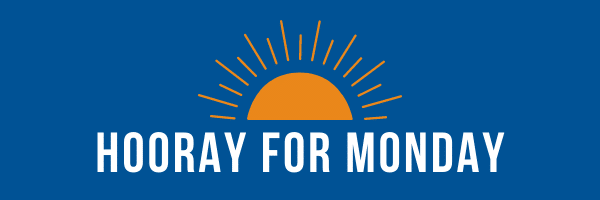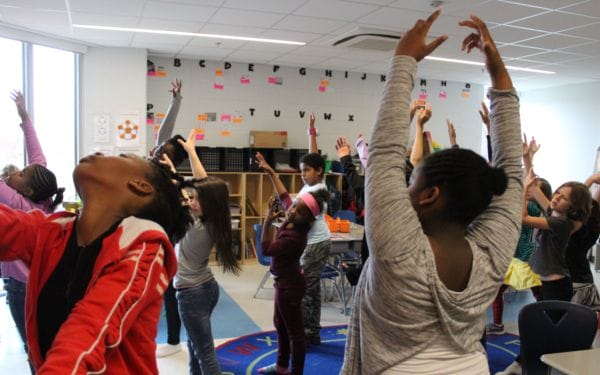March 1, 2021
By Aleta Margolis, Founder and President, Center for Inspired Teaching
Hooray for Monday is a weekly blog filled with questions, ideas, reflections, and actions we can all take to remodel the school experience for students.

Dancing is one of the ways I’ve kept joy in my life during Covid. My zoom dance studio, aka basement, is the place where I warm up, engage in exercises familiar and new, and connect with the other people in my class, including my beloved teacher, Helen Hayes. During each class, Helen teaches us a piece of choreography, a dance phrase. We continue working on the same phrase for a few weeks, deepening our understanding and skill, and refining it until we’ve mastered it. Then we move on and learn a new piece.

Recently Helen introduced a piece of choreography that was particularly challenging. At first this aggravated me.I had really mastered the material from the previous weeks; I’d felt confident and competent while dancing the phrase. Now I was forced to leave behind the comfort of the piece I’d mastered and step into the unknown. I didn’t really want to start over, to experience that shaky I-don’t-know-this-yet feeling. I knew I wouldn’t be good at it for a while. Nevertheless, I stepped in and started to learn. As I engaged in productive struggle to learn the new material, I began reflecting on what I was experiencing, cognitively and emotionally.
At first, I thought: This is Helen’s choreography. She created it and she owns it. She knows it intimately, and so far, I don’t know it at all.
By the middle of the class I was thinking: I am beginning to have access to Helen’s choreography – as she demonstrates the steps and I stumble through them, make mistakes, and receive feedback or figure things out on my own. I’m starting to understand the logic of the way the parts of the dance fit together, how the momentum from one movement prepares me for the next movement, how the tempo rises and falls, how the through-line feels in my body. Helen is still the owner of the dance phrase, but now I have access to it too.
Toward the end of class I thought: I’m no longer struggling to remember what comes next. In fact, as I dive into each dance step, I have muscle memory of how it felt the last time I did it, and my brain and body know where I need to invest my energy to improve it, to take it to the next level. I’ve figured out how to use my breath intentionally to fuel my movement and sustain my stamina throughout the piece. The dance phrase has become mine. Helen created it. She taught it to me. But now it’s in my body and my brain. I own it and I can dance it. It’s mine.
After years of dancing with Helen, my body and my mind are a virtual library of movement and vocabulary I’ve learned from her that is now mine. And this is true for hundreds of students who have studied in her care.
In teaching new material, Helen once explained that she sometimes adjusts the choreography as she sees how we respond to it because seeing her students engage with the material offers her new information on how to improve it. That suggests that in her body and her mind there is also a library of movement and vocabulary enhanced by us, her students.
This is the power of good teachers. Their lessons are not just meant to be poured into passive minds, ready to take them in their entirety without struggle or question. Their lessons are ideas transferred from one creative mind to another, meant to be embodied and owned in unique ways by each learner, meant to be reflected in new ways back to the teacher.
As you head into this new week, consider:
-
In the coming weeks, what are some of the most important things my students need to learn?
-
How will my students (and I) know they own this knowledge once they have learned it?
-
What can I do to learn more from my students in the process?
I’d love to hear what you discover. (Email me: aleta@inspiredteaching.org)
